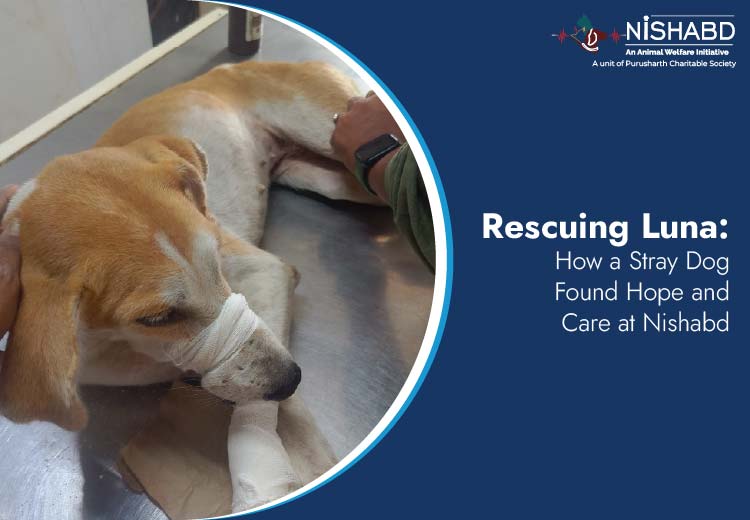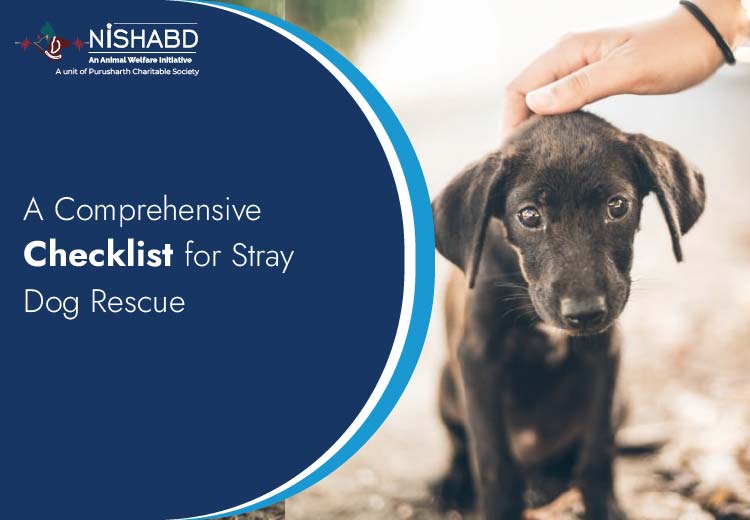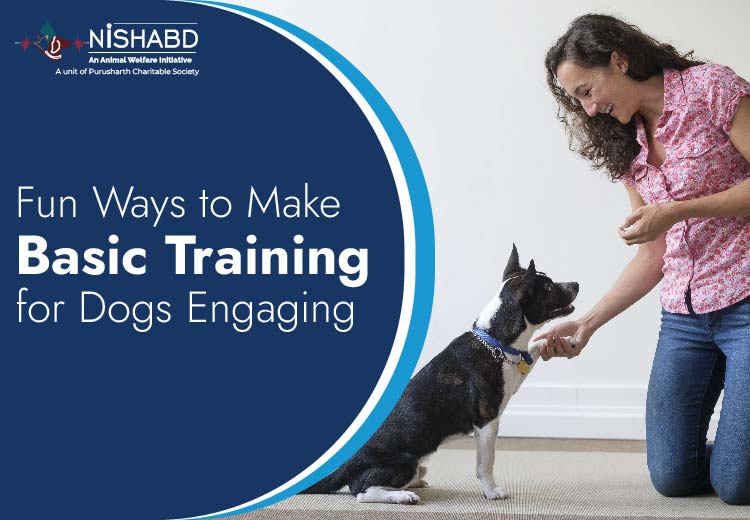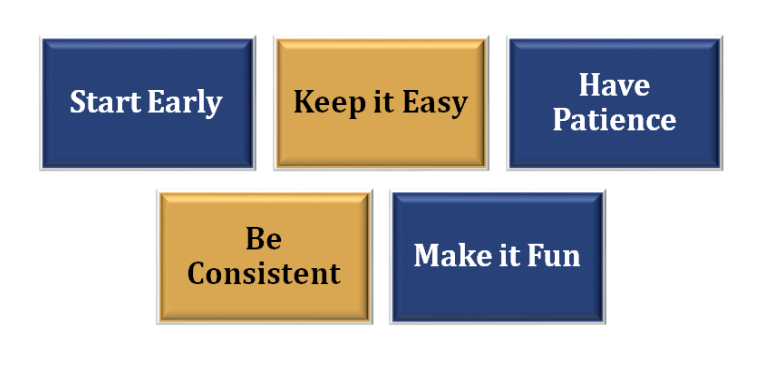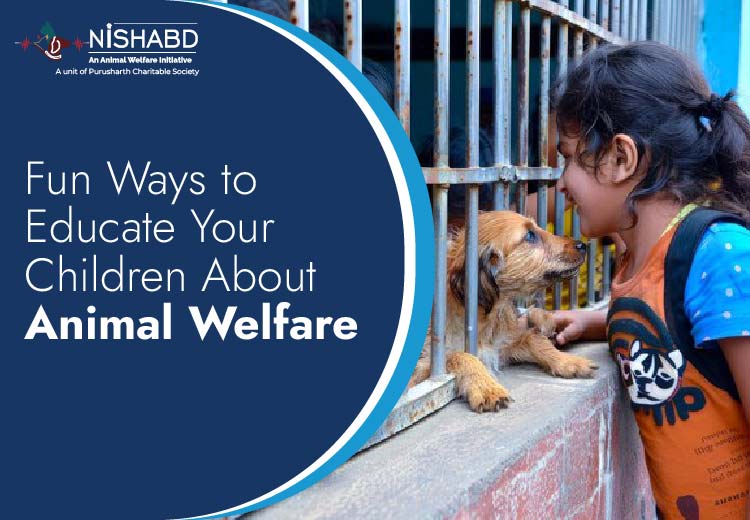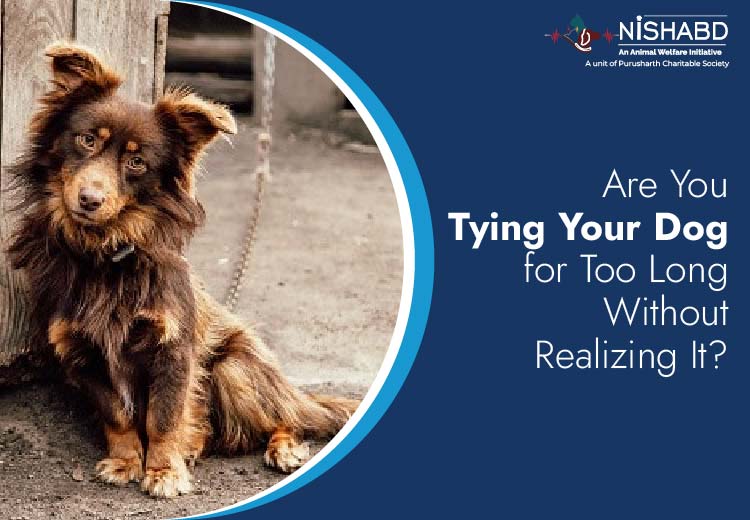Stray animals live a life full of fear, hunger and injuries. They walk on the streets silently, carrying pain that most people fail to notice. Sometimes, a moment of kindness can change everything. This is the story of Luna, a gentle 6-year-old stray dog who finally found care, love, and healing.
Luna’s Condition When She Was Found
Luna lived on the streets in Ghaziabad. She had a serious front leg wound, and because of the pain, she could barely walk. Many people saw her, but everyone kept passing by. Such pain is common in all the animals who walk on the streets. They have to suffer in silence and this is where an NGO for the voiceless comes into place – Nishabd.
Shail, rescuer of Luna, noticed her struggling. He chose compassion instead of running away. He realized that helping is not only an act of kindness, but also a responsibility. He began to search for safe ways to rescue the stray. He gained her trust with patience, gentle words and slow movements. He then contacted Nishabd – a well-known NGO that helps voiceless animals.
Luna was admitted for treatment at Nishabd. Her wound required long-term medical care, including antibiotic injections and ASD dressings. It was not only a physical journey, but also an emotional one.
The Journey of Healing
Luna was scared initially. She didn’t know where she was, or why. Her past had taught her to be alert and defensive. Slowly, she began to realize that this place was very different. The volunteers spoke quietly. They approached calmly. They allowed her to rest. They allowed her to breathe again.
Animal rescue is not only about treating animals, but also about rebuilding trust.
Every day, Luna received:
-
- Medicines on time
- Clean dressing for her wound
- Nutritious food
- A safe space to sleep
Her body began to heal little by little. The real change was in her eyes. Fear slowly faded. Her tail started to wag once more. She knew she was now safe.
It is important to know how to rescue a stray dog. One thoughtful act can save a dog’s life.
Why Animal Rescue Matters
Strays are not wild animals. They are the animals that were once part of a human environment. They are just like your pets at home. They continue to suffer when we ignore them. When we care about others, healing begins and hope returns.
Animal rescue is more than just medical work. It’s about love, patience and understanding. You become a voice of the voiceless when you help.
Nishabd – The Best Dog Shelter in Noida
Nishabd stands as one of the best dog shelter in Noida, and not just because it’s large or well-known, but also because it acts with the heart. This NGO focuses on providing dignity to voiceless animals.
What makes Nishabd unique:
They respond immediately when a dog is in distress.
-
- Paravets are available to provide medical care.
- They ensure clean and safe sheltering for recovery.
- They show people how to responsibly rescue a stray animal.
- The work is done with transparency and compassion.
Nishabd, for dogs like Luna, is more than just a shelter. It is a second shot at life.
How You Can Help Stray Dogs Too
Here are some simple steps to follow if you see a dog in pain and want to learn how to rescue a stray dog:
-
- Approach slowly. Do not scare the animal.
- Build trust by offering food with patience.
- Don’t force the dog to come closer. Allow the dog to come closer when it feels comfortable enough.
- Call a local NGO for voiceless animals or the best shelter for dogs in Noida.
- Stay around the dog until help arrives.
- You can save a life with some small steps.
Conclusion
Luna’s story shows us how powerful compassion can be. One act of kindness changed her life. Nishabd was a place where she found love, care, and treatment. It continues to be a hope for stray animals in pain.
There are countless Lunas on the streets. All they need is someone to care. Maybe that someone can be you.
FAQs
Q1. What should I do if I find an injured stray dog?
Stay calm, go slowly, offer some food or water, and call an animal rescue team or an NGO for voiceless in your area.
Q2. How do I know which shelter to contact?
Look for the best dog shelter in Noida or nearby that gives proper medical care and has a good, honest rescue record.
Q3. Can I volunteer in animal rescue work?
Yes. Most shelters welcome volunteers. Even small help like feeding, cleaning, or spending time with dogs is valuable.
Q4. Does rescuing a stray dog need legal permission?
No. Helping, treating, and rescuing a stray dog is allowed and encouraged.

